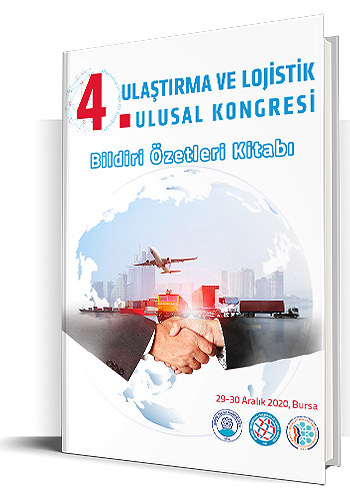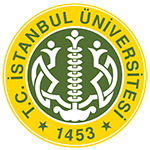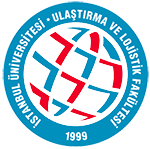
Ulaştırma ve Lojistik Kongreleri
- Türkçe
- Özet
- 2020
Türkiye’de Konteyner Ana Aktarma Limanı Oluşturma Potansiyeli ve Ekonomik Etkileri
Özkan Sungur
Bursa Teknik Üniversitesi, Bursa, Türkiye
Ayberk Şeker
Dr. Öğr. Üyesi, Bursa Teknik Üniversitesi, Bursa, Türkiye
Dünyanın %71’ini oluşturan deniz ve okyanuslar, yük ve yolcu taşımacılığında önemli bir yere sahiptir. Çünkü denizyolu ile ürün ve hizmetleri uzak mesafelere daha ucuz ve kolay nakletmek mümkündür. UNCTAD’ın 2019 Deniz Taşımacılığı Raporuna göre deniz yolu taşımacılığı tüm taşıma modları arasında hacim olarak uluslararası mal ticaretinin %80’ini oluşturmaktadır. Maliyeti, güvenliği ve daha küçük miktarları uzak mesafelere ucuza ve daha kolay götürebilme yeteneği ile günümüzde çokça tercih edilen denizyolu taşımacılığı türlerinden biri olan konteyner taşımacılığı kapsamında, 2019 yılında dünya genelinde elleçlenen TEU (Twenty Equivalent Unit) miktarının UNCTAD’ın 2019 Raporu’na göre 793 milyon ABD dolarına ulaştığı görülmektedir. Aynı rapordaki bilgiler doğrultusunda, 1970’de deniz yolu ile taşınan 2,6 milyar ton kargonun % 27’si konteynerle taşınırken, bu rakam 2018’de 11 milyar tonun %41,8’ine ulaşmıştır. Konteyner taşımacılığı çok amaçlı bir taşıma şekli olup, denizyolu öncesi ya da sonrasında karayolu veya demiryolu ile entegrasyon sağlanmasına imkan vermektedir (Bayraktutan ve Özbilgin, 2013). Konteyner taşımacılığındaki gelişmeler, süreçte yer alan bütün aktörlerde paralel bir şekilde gerçekleşmiş, taşınan miktarın artması ile konteyner gemilerinin kapasitelerinin büyümesi ve buna bağlı olarak limanların operasyon imkânlarının gelişmesine ve makina parklarının büyümesine yol açmıştır. Gemilerin büyümesi doğal olarak yanaşacakları limanların büyümesine ve gemi operasyonlarının bu yeni tip büyük gemilere göre değişmesine sebep olmuştur. Yaşanan gelişmeler konteyner taşımacılığı yapan şirketlerin ağ yapılarını ve çalışma şekillerini bu yeni duruma göre revize etmelerine neden olmuştur. Bu süreçte konteyner taşımacılığı ağ yapıları, servise konulan gemilerin boyutları ve servis sıklıkları tamamen limanların kapasitesi ve özellikleri ile o bölgede üretilen kargo miktarına dayanmaktadır (Varbanova, 2017). Büyüyen gemi ebatları sebebiyle, eskiden olduğu gibi çok limanlı uğrak yapma sisteminin mega konteyner gemilerinin etkin bir şekilde operasyon gerçekleştirememesine yol açtığı ortaya çıkmıştır (Çağlar vd., 2015). Bu nedenle, çok limanlı uğrak sistemine alternatif olarak HUB ve SPOKES (Merkez ve Çevresel Bağlantılar, H&S) aktarma sistemi geliştirilmiştir. H&S sisteminde büyük ana gemiler, ana aktarma limanlarına uğrak yapıp, aktarılacak yükleri burada bırakmakta ve yükler gidecekleri limanlara daha küçük boyutlu gemiler vasıtası ile iletilmektedir. Böylece mega ana gemiler daha az kapasiteli küçük limanlara uğramak için zaman kaybetmemekte ve büyük limanlar arasındaki uzun yol seferlerine odaklanıp maliyet avantajı sağlamaktadırlar (Polat ve Gunther, 2016). Bu sistemin en çarpıcı örneği, Singapur limanıdır. Dünya Bankası verilerine göre Singapur’un 2018 yılındaki nüfusu yaklaşık olarak 6 milyondur. Buna rağmen Singapur limanında 2018 yılı içinde elleçlenen konteyner miktarı 34 milyon TEU’dur. Bunun durumun temel sebebi, Singapur’un dünyanın en önemli aktarma limanına sahip olmasıdır. Elleçlenen bu adet 2018 yılında Singapur liman işletmecisi şirketin yaklaşık olarak 1 milyar ABD doları düzeyinde bir ciro yapmasına olanak sağlamıştır. Trade Map verilerine göre, 2018 yılında ürün ihracatı sadece 412 milyon ABD doları olan Singapur’un 1 milyar ABD doları ciro gerçekleştiren bir limana sahip olması, o limanın ekonomiye olan katkısının ürün ihracatının iki katı olduğunu göstermektedir. 2018 yılı için nüfusun yaklaşık 82 milyon olduğu Türkiye’nin verilerini incelediğimizde, tüm Türkiye limanlarında elleçlenen toplam TEU miktarı yaklaşık 10 milyon, ihracat düzeyinin ise 168 milyar ABD doları olarak gerçekleştiği görülmektedir. Bu çalışmanın amacı, benzer bir şekilde bir ana aktarma limanının Türkiye ekonomisine yapacağı katkıları ortaya koymaktır. Bunu doğrultuda, UNCTAD’ın 2004 yılında ortaya koyduğu Düzenli Hat Bağlantı Endeksi (Hoffmann, 2012; Fugazza ve Hoffmann, 2017), limanların üretim adetleri ve ülkelerin ihracat verileri kapsamında analizler gerçekleştirilmiştir. Sonuçlar doğrultusunda, Ulaştırma ve Altyapı Bakanlığının Mersin’deki yeni liman projesinin konteyner ana aktarma limanı için önemli katkılar sağlayacağı düşünülmektedir. Bu projenin gerçekleşmesi için sadece limanların inşa edilmesi yeterli olmayıp, mevzuat revizelerinin yapılması ve altyapı yatırımlarının tamamlanması ile bu proje Türkiye’nin hem ekonomisine büyük katkı sağlayacaktır, hem de sivil denizcilik alanında etkinliğini arttıracaktır.
Anahtar Kelimeler: Uluslararası Ticaret, Lojistik Aktarma Limanı, Düzenli Hat Bağlantı Endeksi, Konteynır Taşımacılığı
The Potential of a Container Main Transshipment Hub and Its Economic Impacts in Turkey
The seas that are 71% of the world have an important role in freight and passenger transportation. Because by sea it is possible to transport it more cheaply and easily over long distances. According to the 2019 Maritime Transport Report of UNCTAD, maritime carries 80% of the international products in terms of volume among all transport modes. Wee see the container transportation, which is one of the most preferred maritime transportation modes today with its cost, safety and ability to transport smaller quantities to long distances, cheaper and easier, have reached to 793.26 million TEU worldwide according to the UNCTAD's 2019 Report from 1959 to today. According to the information in the same report, 27% of 2.6 billion tons of cargo transported by sea in 1970 was transported by container, while this figure reached 41.8% of 11 billion tons in 2018. Container transportation is a multi-purpose form of transportation, which allows integration with road or rail before or after sea transportation (Bayraktutan and Özbilgin, 2013). The development in container transportation has been parallel to all actors involved in the process, the increase in the number of transported containers led to the increase in the capacity of the container ships, resulting in the development of the operational capabilities of the ports and the growth of the machinery parks. The growth of the ships has naturally caused the ports they will berth to get bigger and ship operations to change according to this new type of large ships. Recent developments have caused container transportation companies to revise their network structures and working methods according to this new situation. In this process, the container transport network structures, the dimensions of the ships put into service, the service frequency are all based on the capacity and characteristics of the ports and the amount of cargo produced in that region (Varbanova, 2017). The growing of ships capacities turned out that the multi-port calling system of caused mage container ships not to be operated effectively as they used to be (Çağlar et al., 2015). For this reason, HUB and SPOKES (Central and Peripheral Connections, H&S) transfer system was developed as an alternative to the multi-port call system. In the H&S system, big motherships call the main transhipment ports, discharge the cargoes to be transhipped , and the cargoes arrive at the destination ports via smaller ships. Thus, mega motherships do not waste time to call in smaller ports with less capacity, and they focus on their longer voyages between large ports and create a cost advantage (Polat ve Gunther, 2016). The most striking example of this system is the Singapore port. According to World Bank data, Singapore's population in 2018 was six million people. Despite this, the amount of containers handled in Singapore port in 2018 is thirty four million TEU. The only reason for this is that Singapore is the world's most important main transhipment hub. The figure handled in 2018 made the Singapore port operator company to make a turnover of around one billion USD. According to the data obtained from Trademap, Singapore has a product export of four hundred twelve million USD, which is showing the Singapore port whose turnover is around one billion USD, contributed twice the product exports for Singapore economy. To make a comparison if we handle datas of 2018 for Turkey; population is eighty two million, the total TEU handled at all Turkish ports is ten million, Turkey’s 2018 product export figure is one hundred sixty eight billion USD. The aim of this study is to determine the contribution to the economy of Turkey of a main transshipment port in a similar manner. While doing this, we tried to reach a conclusion based on the Liner Shipping Connectiviy Index (Hoffmann, 2012; Fugazza and Hoffmann, 2017) issued by UNCTAD in 2004, the production numbers of the ports and the export data of the countries. According to our conclusion, the new port project of the Ministry of Transport and Infrastructure in Mersin is the most suitable candidate for this container main transhipment hub. Of course, it will not be enough to build a port only for the realization of this project. With the completion of the revised legislation and infrastructure investments, this project will make a major contribution to Turkey's economy and also will increase the effectiveness of civil maritime area.
Keywords: Liner Shipping Connectivity Index, International Trade, Container Transportation, Transshipping Port


Bu çalışma, kullanan kişilere orjinal çalışmadan alıntı yaptıkları sürece, çalışmayı dağıtma, değiştirme ve üzerine çalışma hakkı tanıyan Attribution 4.0 International (CC BY 4.0) lisansı ile lisanslanmıştır.
İletişim
İstanbul Üniversitesi Ulaştırma ve Lojistik Fakültesi
İ.Ü. Avcılar Kampüsü 34320 Avcılar/İstanbul
ulk@istanbul.edu.tr
+ 90 (212) 440 00 00 - 19200


